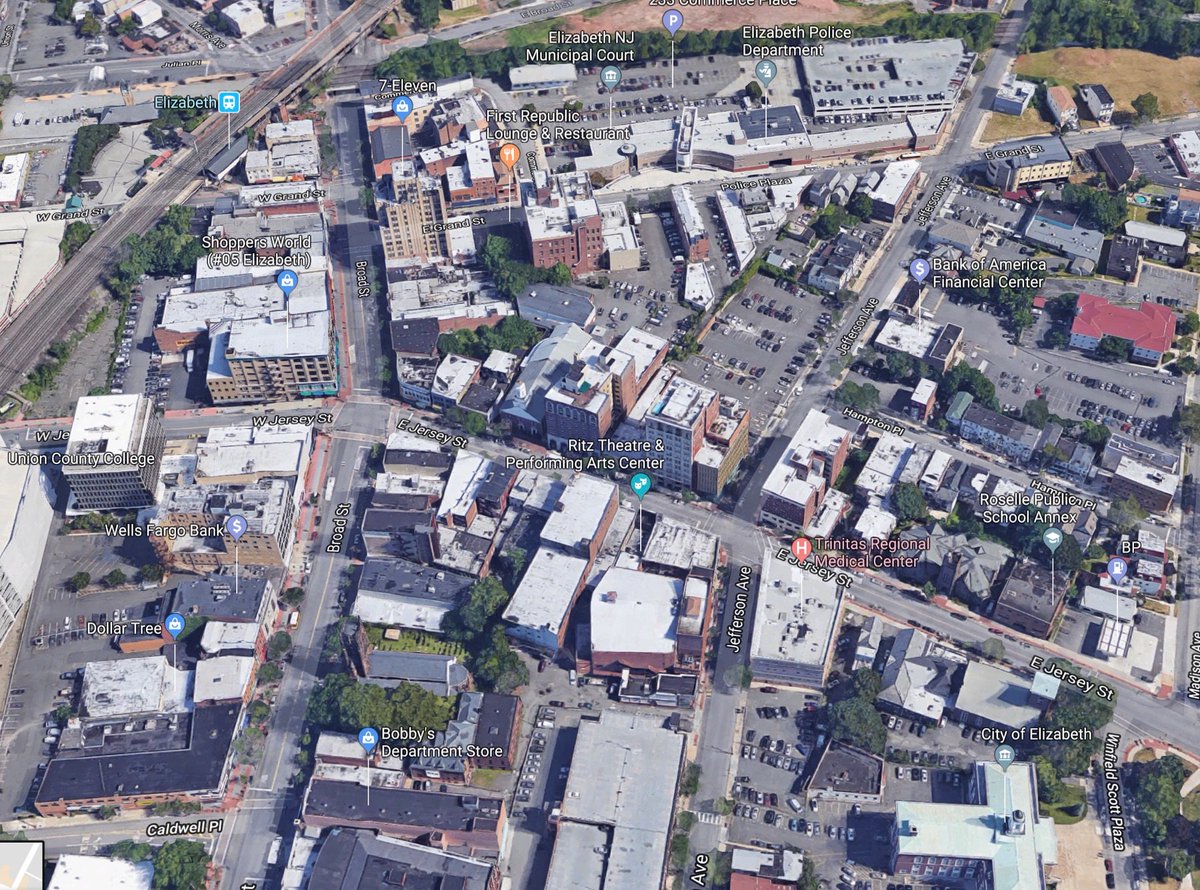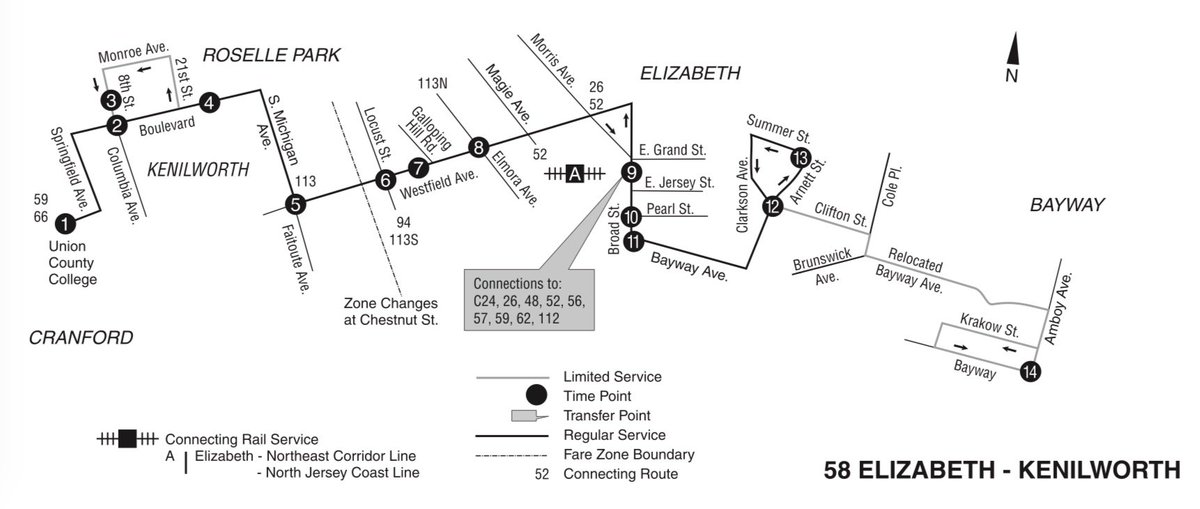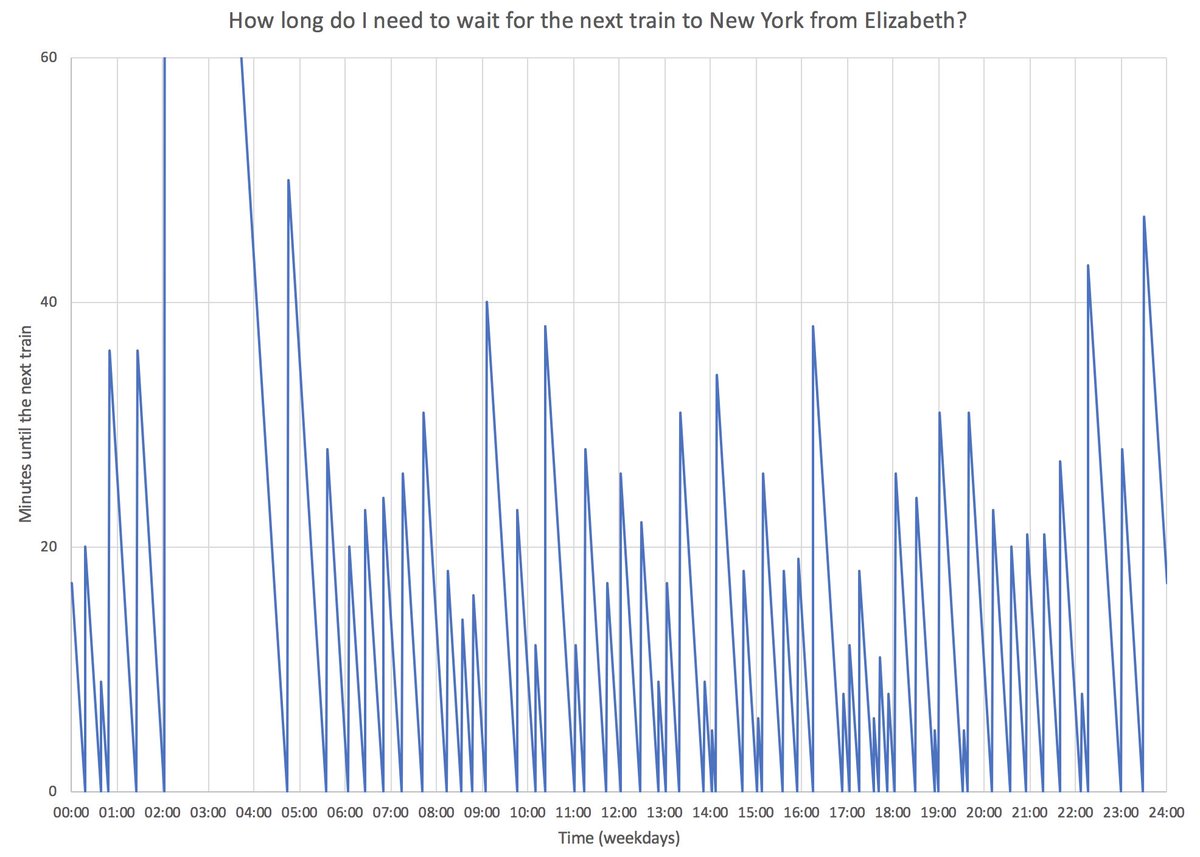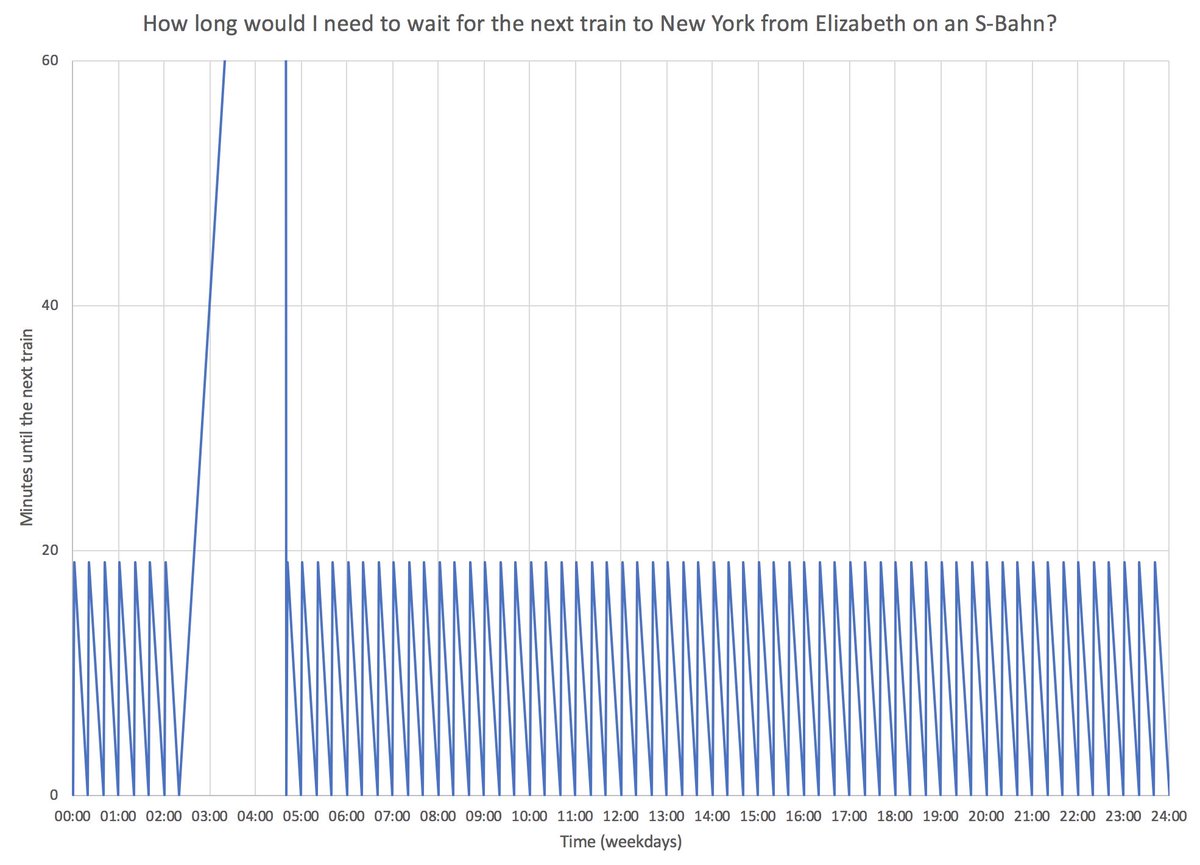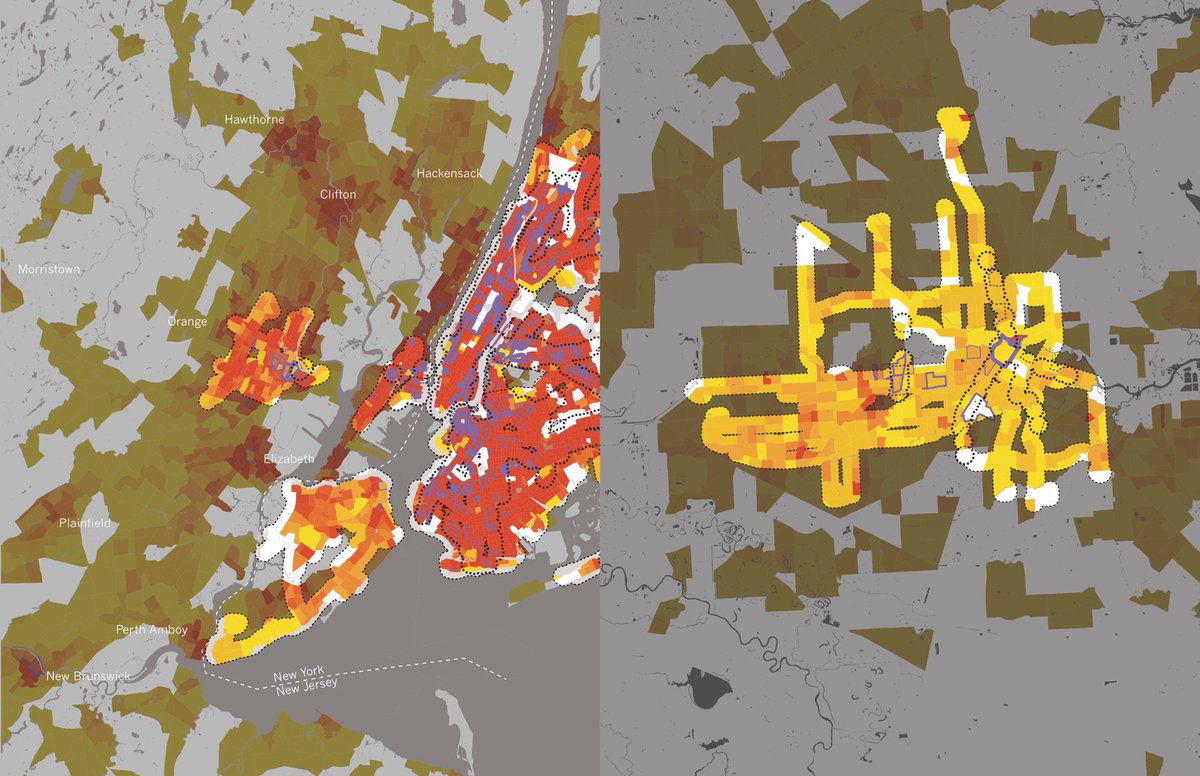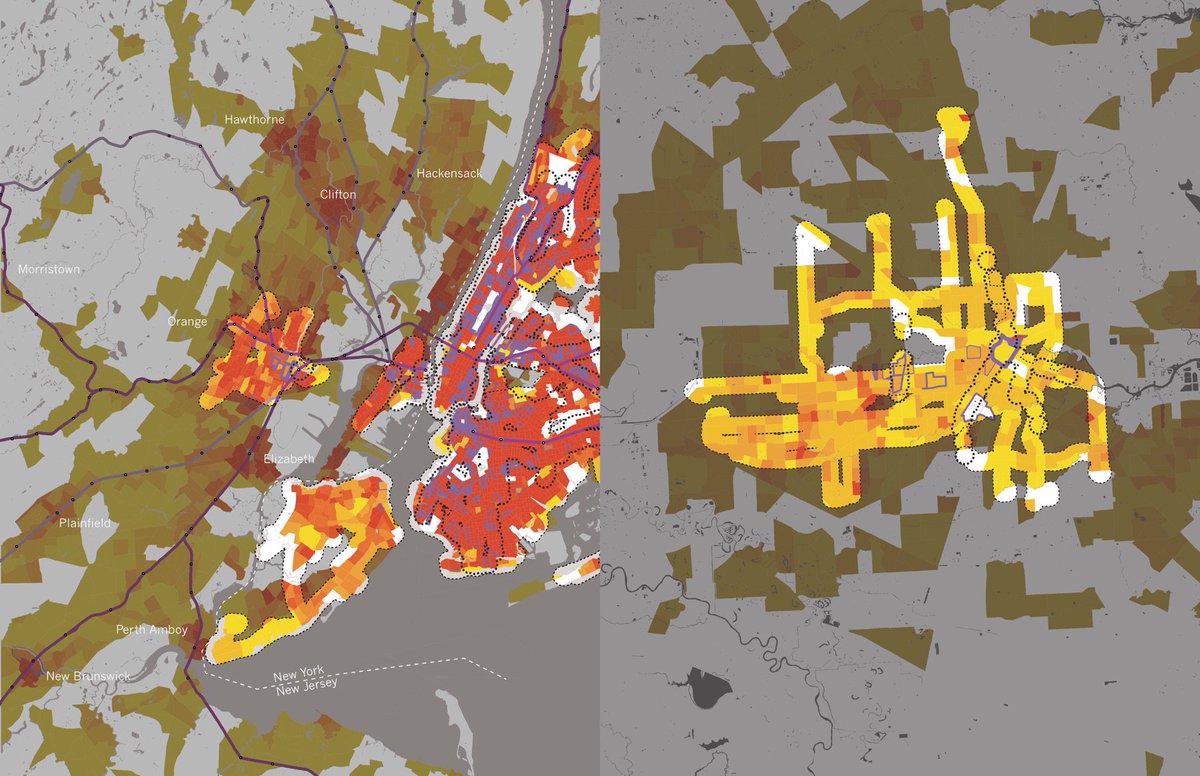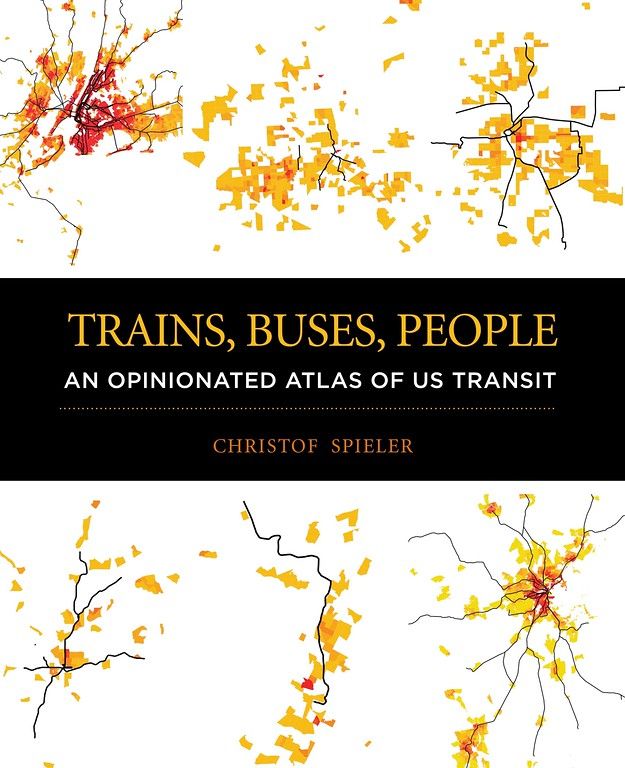Follow-up on US commuter rail vs. S-Bahn: here’s the New Jersey Transit schedule at Elizabeth, NJ towards NYC. On avg, not counting the overnight gap, there’s a train every 22min, but you could wait nearly 40min several times during the day, including around 9:00 am and 5:00 pm.
There’s a lot around this station — jobs, services, population. The city of Elizabeth is over 10,000 people/square mile. Population density in walking distance of the station is higher than any light rail station in Denver. That’s significant transit demand, all day, every day.
A lot of those people are riding the bus right now. But bus and rail fares are different (sometimes ridiculously so — Elizabeth to Newark is $2.55 by bus and $3.00 by train.) And there are no free transfers or transfer discounts between modes: a bus+rail trip is two full fares.
And everything’s hard to figure out. To find out a NJT bus fare, you have to find the map for that route and look for the little dashed lines to count zones. If you’re going to the airport, 56 of the trains through Elizabeth stop there but 1 doesn’t. All that drives away riders.
New Jersey has the infrastructure, the equipment, and most of the required service in place to have a really useful S-Bahn — it just isn’t planned/operated that way, likely because they see “commuter trains” as some some of special transit that’s not like bus or a light rail.
Here’s what this would look like with an S-Bahn like clockface schedule. This is only a 16% increase in service, but no wait over 20 minutes anytime during the day.
(That’s specifically for Elizabeth — other lines would require more added service. But this is not unreasonable.)
Here’s a comparison of frequent (every 15 min, 5 days a week, 7:00-6:00) transit — the kind you don’t need to look at a schedule for — on population density in northern NJ and Houston. New Jersey is much denser but has much worse service. It definitely needs a bus reimagining.
It’s notable just how much of that density is on commuter rail (purple lines.) Many of these routes are electrified, many are double track, few have much freight rail. Regional rail service on existing infrastructure integrated with buses could be transformative.
Like these maps? There are a lot more (47 metro areas worth) in my book: https://islandpress.org/book/trains-buses-people
A little more context here: New Jersey Transit has 70% more average weekday bus trips than commuter rail trips. Only 16% of those bus trips are going into Port Authority Bus terminal. There are more NJT bus riders that stay in NJ than there are commuter rail riders.
NJT bus routes from Newark overlaid on commuter rail. There’s quite a bit of duplication — New Jersey essentially has two parallel, separate transit systems. If the rail lines were frequent and fares were the same as bus, they would be useful for many of these bus riders.
New Jersey commuter rail costs less to operate (per passenger mile— $0.49 vs $0.77, 2016 NTD) than bus. More service and more off-peak ridership would make commuter rail more cost-efficient. Letting more bus riders use rail wouldn’t just help them — it would save taxpayers money.

 Read on Twitter
Read on Twitter
